
6 sea stars to see in South Australia
Is it a sea star or a starfish? Find out and learn about the six most popular species you’ll find in SA waters.
To quickly clear things up, it’s a sea star. Back in the day they were known as starfish, but marine scientists have replaced it with sea star because, well, the starfish is not a fish.
The sea star is actually an echinoderm, which is closely related to a sea urchin.
Interestingly, sea stars have a mouth underneath, a butt on top and a stomach inside. Their stomach can be pushed out of their mouth and onto their prey to feed. The arms of a sea star also contain digestive glands to help process food.
South Australia is home to one of the smallest species of sea stars, which grows up to one cm, as well as some large species which span about 50 cm across.
Here are six popular species you’ll find in SA waters:
1. Biscuit star
The pretty, five-pointed biscuit star is one of the most common sea stars in SA.
Biscuit stars grow to about 10 cm across and have a large variety of colours and patterns, and sometimes a central star-burst pattern of a contrasting colour.
They are found on reefs and other hard surfaces, from the intertidal zone down to about 40 m deep. Look for them on the surface of jetty piles too, especially near sponges and sea squirts, which are their preferred food.
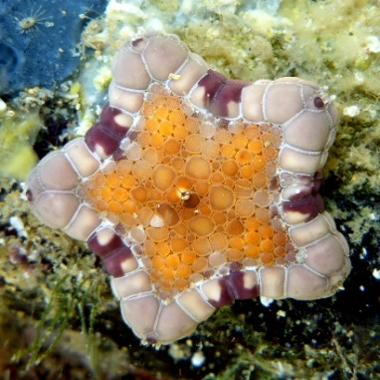
2. Velvet sea star
Also known by divers as ‘Patrick’ from SpongeBob Squarepants, velvet sea stars are found across southern and south-eastern Australia, and around islands off eastern Australia.
This five-armed species is commonly seen on shallow reefs and down to about 60 m deep.
The velvet sea star is quite large, measuring up to 16 cm across. They have smooth skin, usually red, orange or cream with red mottling. Rings of little sacs called papillae protrude from the skin surface, which allow gas exchange, like breathing.
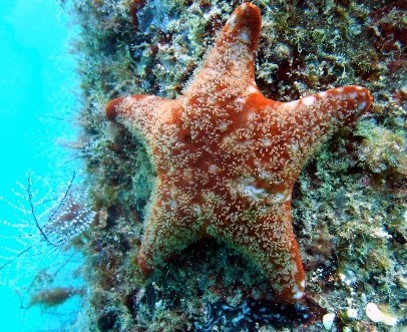
3. Carpet sea star
The very colourful, eight-armed carpet sea star is commonly seen in rock pools in some parts of southern and south-eastern Australia.
It prefers wave-exposed locations rather than sheltered waters, and eats a wide variety of small marine animals and plants that live between and below the tideline.
Carpet sea stars can be a single colour or mixture of shades and patterns. Their colouring is usually purple, mauve, blue and green, orange, red, maroon, brown and grey.
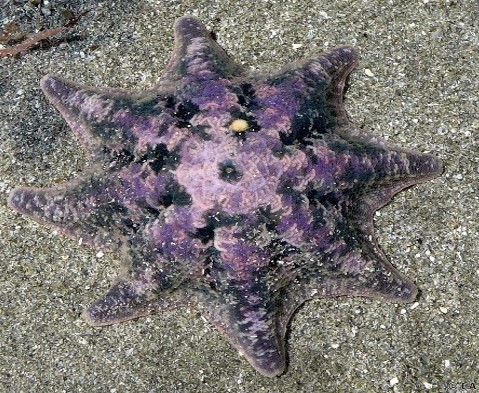
4. Eleven-arm sea star
This large sea star grows to about 50 cm across and is the biggest sea star in southern Australia.
As the name suggests, this species usually has 11 arms, but arm numbers can vary between seven and 14. The eleven-arm sea star can drop some arms when stressed – and regrow them.
Two new sea stars can grow from a single eleven-arm sea star splitting in half (binary fission) and – incredibly – a whole new sea star can grow from one broken arm!
The star can be found at a broad range of depths in reefs and other hard surfaces, rubble and sandy sea floors.
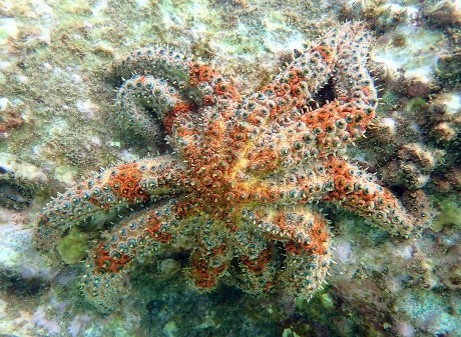
5. Six-armed cushion star
This sea star is usually less than 10 cm across and can be found across southern Australia in shallow reefs, seagrass beds and under intertidal rocks.
Its six arms are short and have webbing between them. Arms are usually coloured dark purple or maroon, and have bright orange tube feet underneath.
Their diet includes red algae, little seaweeds that grow on seagrasses and many kinds of invertebrates, such as sponges, sea squirts and worms.
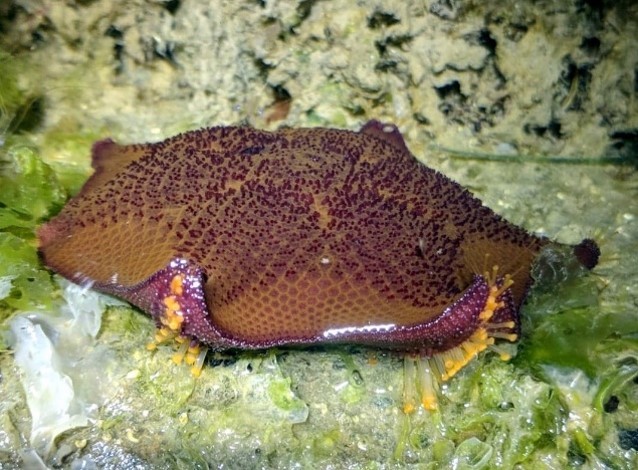
6. Granular sea star
This five-armed, reef-dwelling sea star grows to about 20 cm across. They have wart-like lumps called tubercles on their arms.
Like the eleven-armed sea star, the granular sea star can drop arms when stressed, and regrow them, as well as grow that arm into a new sea star.
Granular sea stars feed on sea squirts and bivalve molluscs.
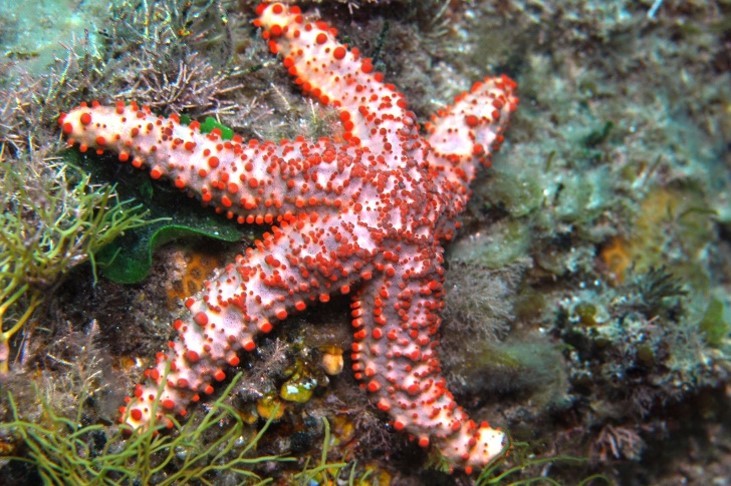
This story and images were prepared with the help of Marine Ecologist and Educator Janine L. Baker.
Read about some other marine species you can find in SA marine parks, like blue devil fish,cuttlefish, and other baby marine animals. Or you might like to learn about a recent surveying expedition to the Fleurieu’s rocky reefs and what makes them so special.
Main image: Velvet sea star – Petricia vernicina (image courtesy of John Turnbull)